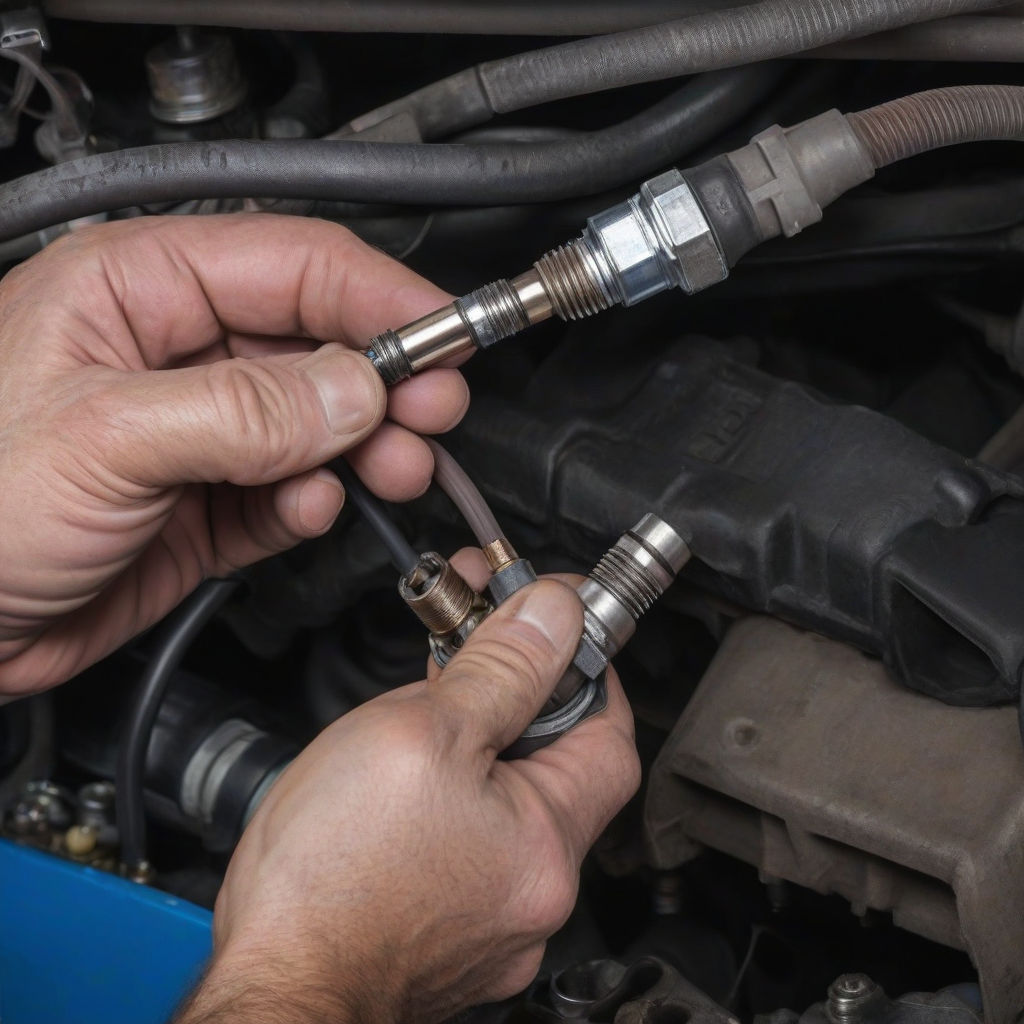
The oxygen sensor (O2 sensor) in your 2017 Ford Explorer plays a crucial role in monitoring the air-fuel mixture in your engine and ensuring the optimal operation of the vehicle's emissions system. Over time, the O2 sensor can wear out or malfunction, leading to poor engine performance, decreased fuel efficiency, and increased emissions. Replacing a faulty oxygen sensor is important to maintain your vehicle’s performance and prevent potential damage to the catalytic converter.
What is an Oxygen Sensor?
The oxygen sensor is responsible for measuring the amount of oxygen in the exhaust gases leaving the engine. This information is relayed to the vehicle's Engine Control Unit (ECU), which adjusts the air-fuel mixture to ensure it’s neither too rich (too much fuel) nor too lean (too much air).
Signs of a Failing Oxygen Sensor
A bad O2 sensor can cause several issues, which are usually noticeable when driving your Ford Explorer. Common symptoms include:
- Check engine light: The most common indicator of a faulty oxygen sensor is the illumination of the check engine light.
- Decreased fuel efficiency: If your Explorer is using more fuel than normal, the oxygen sensor might be sending incorrect signals to the ECU, resulting in poor air-fuel mixture control.
- Rough engine idle or misfires: A failing oxygen sensor can cause the engine to run rough, idle irregularly, or even misfire.
- Increased emissions: Your vehicle may not pass an emissions test if the O2 sensor is malfunctioning, as it plays a vital role in controlling the emissions system.
Tools and Materials Needed
To replace the oxygen sensor on your 2017 Ford Explorer, you'll need the following tools:
- Oxygen sensor socket: This specialized socket is designed to fit over the wiring and loosen the sensor from the exhaust system.
- Ratchet and extensions: A ratchet with extensions will help you reach the oxygen sensor, especially if it’s in a tight spot.
- Torque wrench: To tighten the new sensor to the correct specification.
- Penetrating oil: In case the old sensor is stuck in place due to rust or corrosion.
- Anti-seize compound: To apply to the threads of the new sensor to make future removal easier.
- New oxygen sensor: Make sure you purchase the correct part for your Ford Explorer’s engine type (typically costs between $50 to $200, depending on the brand and quality).
Oxygen Sensor Replacement: Step-by-Step Process
- Diagnose the problem: Before replacing the oxygen sensor, confirm that it’s the issue by reading the check engine light code with an OBD-II scanner. For an oxygen sensor issue, you’ll likely see codes such as P0131, P0132, P0133, or similar.
- Locate the oxygen sensor:The 2017 Ford Explorer has multiple oxygen sensors—typically two or four, depending on whether it’s equipped with a V6 engine. The sensors are positioned:Upstream (before the catalytic converter)Downstream (after the catalytic converter)
- Upstream (before the catalytic converter)
- Downstream (after the catalytic converter)
- Disconnect the battery:Always disconnect the negative terminal of the battery before working on the electrical system to avoid any accidental shorts.
- Raise the vehicle:Use a jack to lift the front of the Explorer and secure it with jack stands. This will give you better access to the exhaust system where the oxygen sensors are located.
- Locate the faulty sensor:Use your diagnostic code to identify whether the problem is with the upstream or downstream oxygen sensor. Once located, spray some penetrating oil on the sensor to help loosen it.
- Remove the old sensor:Use the oxygen sensor socket and ratchet to carefully loosen and remove the sensor from the exhaust pipe.
- Install the new sensor:Apply a small amount of anti-seize compound to the threads of the new sensor. Be careful not to get any on the sensor tip, as it could damage the sensor. Screw in the new sensor and use a torque wrench to tighten it to 30-35 ft-lbs.
- Reconnect the wiring:Plug the new sensor into the existing electrical connector, making sure it’s secured properly.
- Reconnect the battery and clear the code:Reattach the battery’s negative terminal and start the vehicle. Use the OBD-II scanner to clear any check engine light codes related to the oxygen sensor.
- Test drive:After completing the replacement, take your Explorer for a short test drive to ensure everything is working properly. The check engine light should remain off, and the vehicle should run smoothly.
Cost Breakdown
- Oxygen sensor: $50 - $200 depending on the brand and whether it's upstream or downstream.
- Labor cost (if done professionally): $100 - $200. Replacing the sensor yourself can save you $100+ in labor.
- Total DIY cost: $50 - $200.
- Total professional cost: $150 - $400.
FAQs
How many oxygen sensors does a 2017 Ford Explorer have?The 2017 Ford Explorer typically has between two to four oxygen sensors, depending on whether it’s equipped with a 4-cylinder or V6 engine.
How often should I replace the oxygen sensor?Oxygen sensors should generally be replaced every 60,000 to 90,000 miles. However, they can fail earlier due to extreme conditions or contamination from fuel additives.
Can I drive with a bad oxygen sensor?While you can drive with a faulty oxygen sensor, it’s not recommended. Over time, it can lead to poor fuel efficiency, increased emissions, and potential damage to your catalytic converter, which can be costly to replace.
Is replacing an oxygen sensor difficult?Replacing an oxygen sensor is a relatively straightforward task for those with basic mechanical skills. The most challenging part can be accessing the sensor, depending on its location in the exhaust system.
What happens if I don’t replace a bad oxygen sensor?If you don’t replace a faulty oxygen sensor, your engine may run rich or lean, resulting in poor fuel economy, higher emissions, rough idle, and possibly even damage to your catalytic converter.

